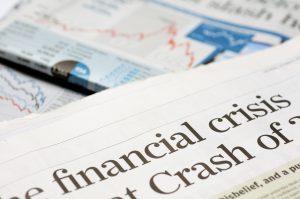People’s QE Is Coming And The Result Will Be A Disaster
The comments below are an edited and abridged synopsis of an article by Gary Evans
The Fed’s increasing reliance on the asset price channel of the monetary transmission mechanism over the past decade has inflated assets and stimulated aggregate demand. Household net worth is now at a record level.
The asset price channel of monetary policy relative importance has increased as households deleveraged after the financial crisis of 2008, rendering the credit channel of monetary policy almost completely ineffective, at least until recently. The result: Asset bubbles everywhere.

Conservative savers who kept their money in CDs saw their interest income go to zero, while risk takers and the highly leveraged were bailed out. Many who have done all the right things (worked hard, saved, paid their bills) feel they have been screwed in a big way.
Because the wealth disparity has become so vast in the past 7 years, the efficacy of asset inflating monetary policy diminishes, and more Fed stimulus is needed, as are higher asset prices.
During the next recession, the Fed may be forced to roll out some sort of people’s QE—the direct financing of consumption, possibly in the form of financing a universal basic income, the direct bailout of public pensions, and the funding of a massive jobs facility.
The result will likely be a disaster. The dollar will tank, and its role as the world’s reserve currency will be over. There will be another deflation scare, but it will sow the seeds of inflation.
Maybe the Fed shouldn’t have gone down this road, transforming the economy into an asset-driven beast, but it is too late now.
